Most beginners believe the zig-zag stitch is the only way to sew stretch fabrics on a regular machine. And while it does the job, it’s not always the durable option. That’s when the tricot stitch took a step ahead.
Unlike a zigzag, which moves side to side in one continuous motion, the tricot stitch creates a tiny three-step pattern. It moves forward and back in short segments. It makes the seam stronger, flatter, and more flexible.
But to the eye, it looks a bit like a lightning bolt instead of a straight zigzag line. If you look up close, you will see that’s not the case.
What happened then? How does a tricot stitch sewing machine work?
Tricot Stitch
To do tricot machine, set your machine to the tricot setting, use a short stitch length (around 1.5–2.5) and medium width, then sew slowly while guiding the fabric evenly.
The result? Stitches that don’t pop open when the fabric stretches. It gives it a finish that looks cleaner on knits, lingerie, swimwear, or any stretchy fabric.
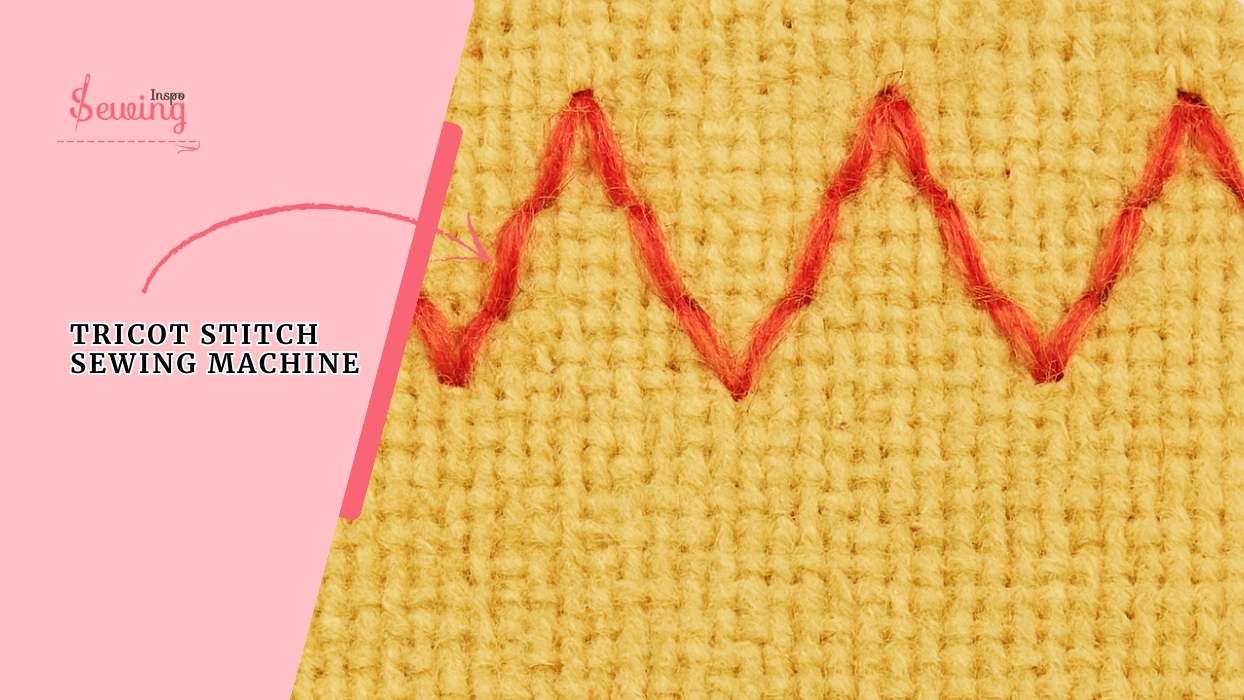
Table of Contents
What Is The Tricot Stitch?
The tricot stitch is a 3 tiny zigzag stitches on each line. It’s designed specifically for sewing knit or stretchy fabrics.
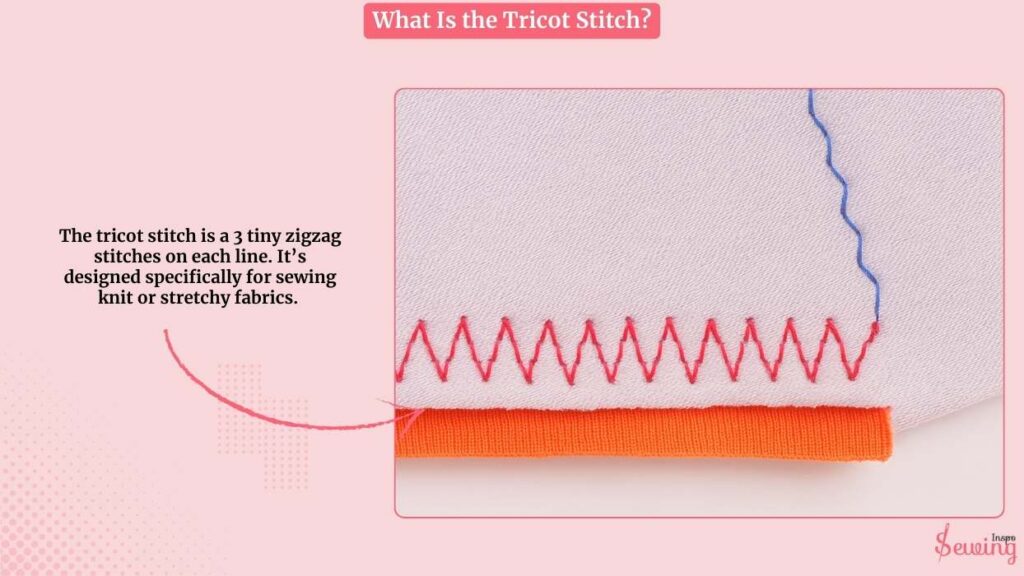
This creates a seam that looks a little like a lightning bolt.
The beauty of the tricot stitch is that it stretches with the fabric without breaking, while also lying flatter than a regular zigzag. It’s like a stronger, more flexible upgrade to the classic zigzag stitch.
When To Use Tricot Stitch?
You can use the tricot stitch any time you’re working with fabrics that stretch or need a seam that can flex without snapping. Some of the most common situations include:
- Knit fabrics
- Activewear & sportswear
- Lingerie & swimwear
- Elastic casing
- Reinforcing seams
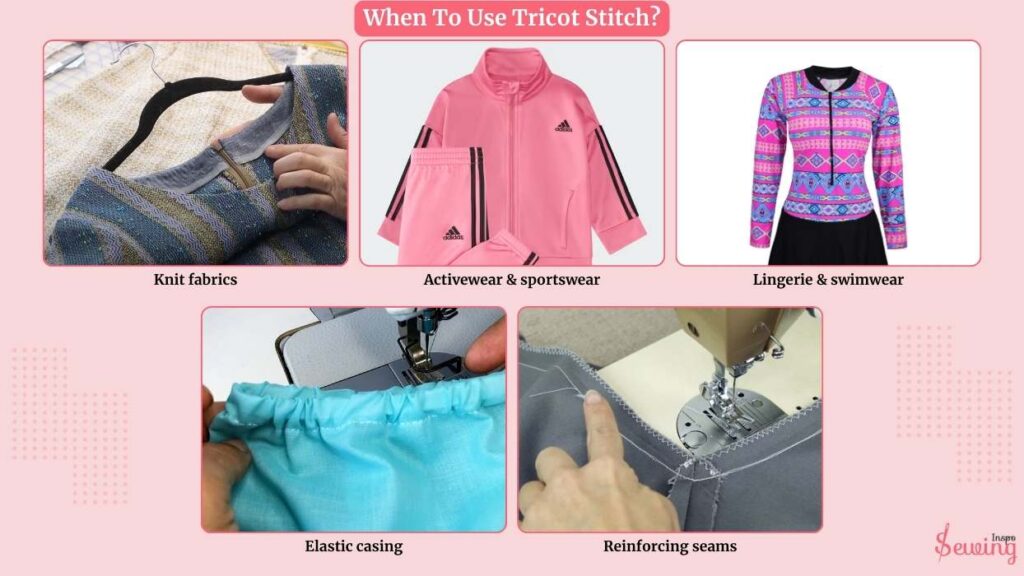
In short, if your project involves stretch + stronger stitch, the tricot stitch is your best friend.
How to Do the Tricot Stitch On A Sewing Machine With A Tricot Strip?
To do the tricot stitch on a sewing machine, follow these steps:
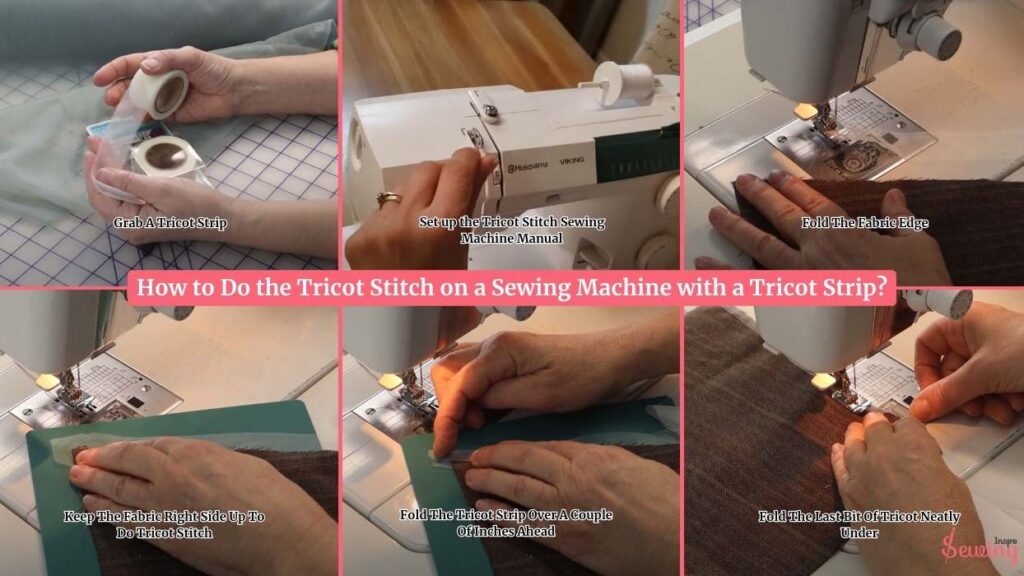
Grab A Tricot Strip
I grab a strip of tricot instead of trying to stitch directly onto the fabric. You might wonder why?
Well, I do this because tricot is stretchy and smooth. It makes it perfect for finishing edges neatly.
By using a separate tricot strip, I have more control over the seam unlike serger stitches.
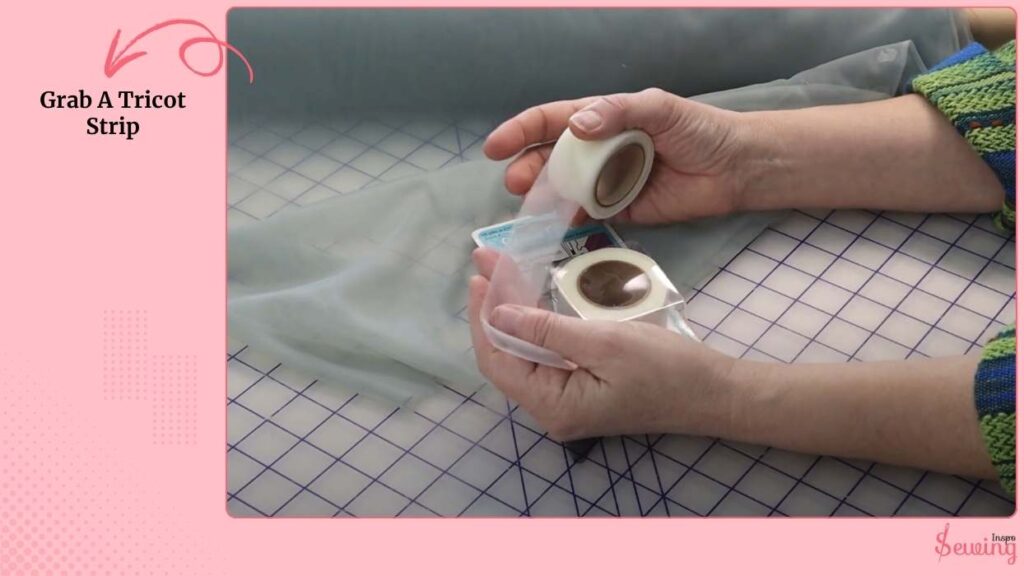
It’s easier to fold, guide under the presser foot, and catch securely without the main fabric stretching or shifting. Plus, it gives the seam a clean. It also gives a professional look that would be tricky to achieve if I stitched directly on the fabric edge.
So I always prep my tricot strip first. And ensure it’s the correct width and length. That little extra step saves a lot of frustration and makes the stitching process smoother, especially on tricky or delicate fabrics.
Set up the Tricot Stitch Sewing Machine Manual
On my machine, the tricot stitch is shown with three short zigzag lines side by side. I turn the dial or press the stitch selector until I land on it.
The manual suggests a short stitch length (about 1–1.5 mm) and a medium stitch width (around 5 mm).
This combo makes the stitch strong, while still being stretchy enough for knits.
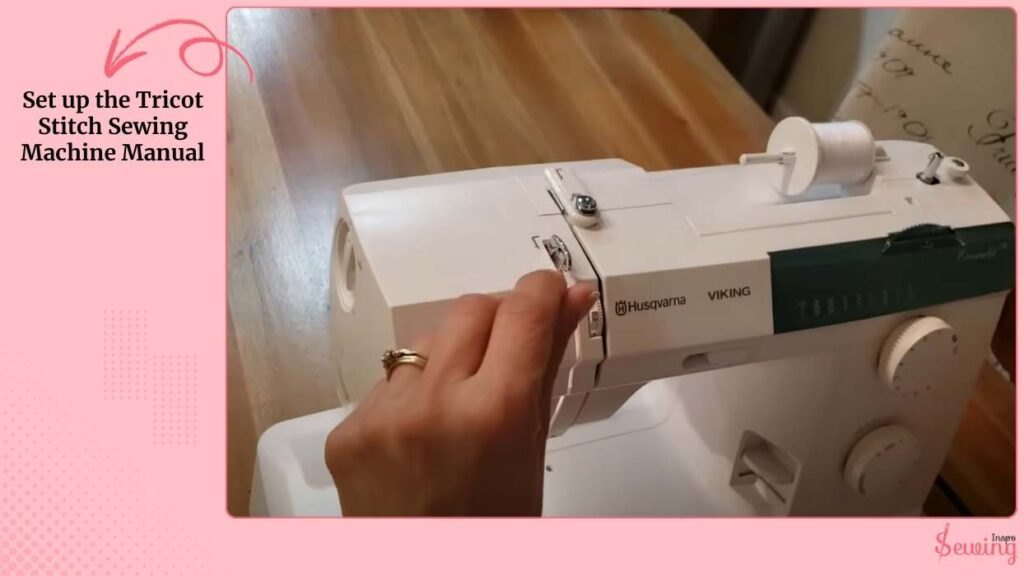
Fold The Fabric Edge
On a straight edge of a commercial fabric, you’ll notice that the edge is cut a little off-grain. That’s helpful here because you can see how the fabric naturally wants to curl.
First, I check the direction of the fabric curl and see how it rolls.
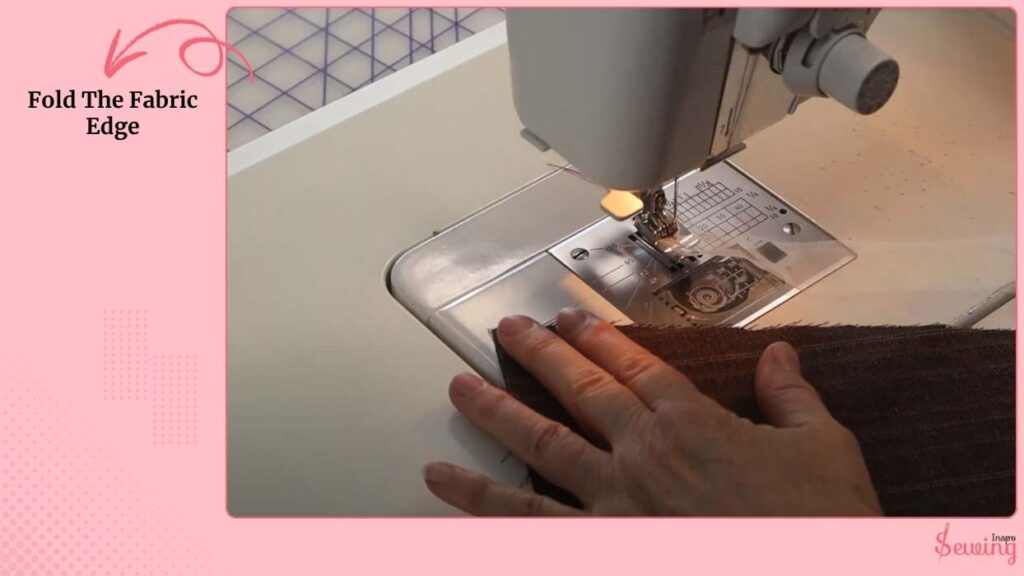
Once I’ve got that, I place the backside of the tricot down on the sewing machine’s throat plate. I’ve put a little board underneath so the contrast is easier to see. Otherwise, white on white would be completely white.
Keep The Fabric Right Side Up To Do Tricot Stitch
Now I take my main fabric, keeping the right side facing up, and place it over the tricot so that a bit of the tricot extends underneath and is still visible.
The reason for this is simple,
When you fold the tricot over later to stitch, you’ll be sure to catch it neatly in the back.
With everything lined up, I position the layers under the machine, ready to sew. For clarity, I’m using a contrasting piece of tricot so it’s easy to see what’s happening in the stitching process.
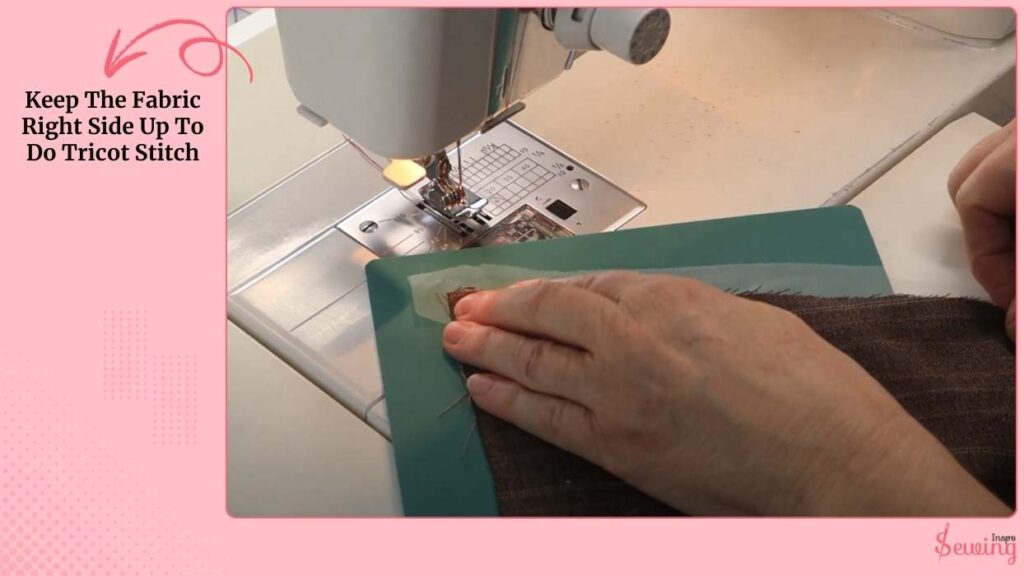
Fold The Tricot Strip Over A Couple Of Inches Ahead
I’m simply folding the tricot strip over a couple of inches ahead of the presser foot, then stitching right up to that fold.
It’s a simple rhythm: fold over, stitch to catch it up… fold over, stitch to catch it up.
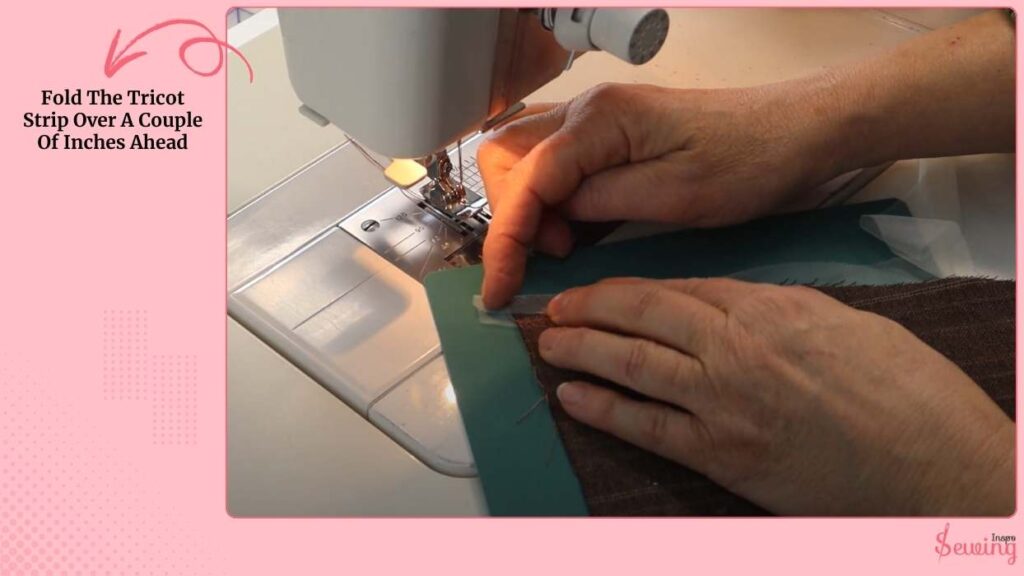
If you happen to run out of tricot while working, don’t worry. You can just cut a new strip and overlap it slightly with the previous one before continuing to sew.
There’s no need to stop or start over. The overlap will hold everything in place securely.
Fold The Last Bit Of Tricot Neatly Under
When you get to the end of your seam, just fold the last bit of tricot neatly under and stitch it down so it’s secure.
Give it a quick press with your iron, and you’ll see a nice, clean finish that looks professional, like a loop stitch.
That’s it! You got a tricot stitch!
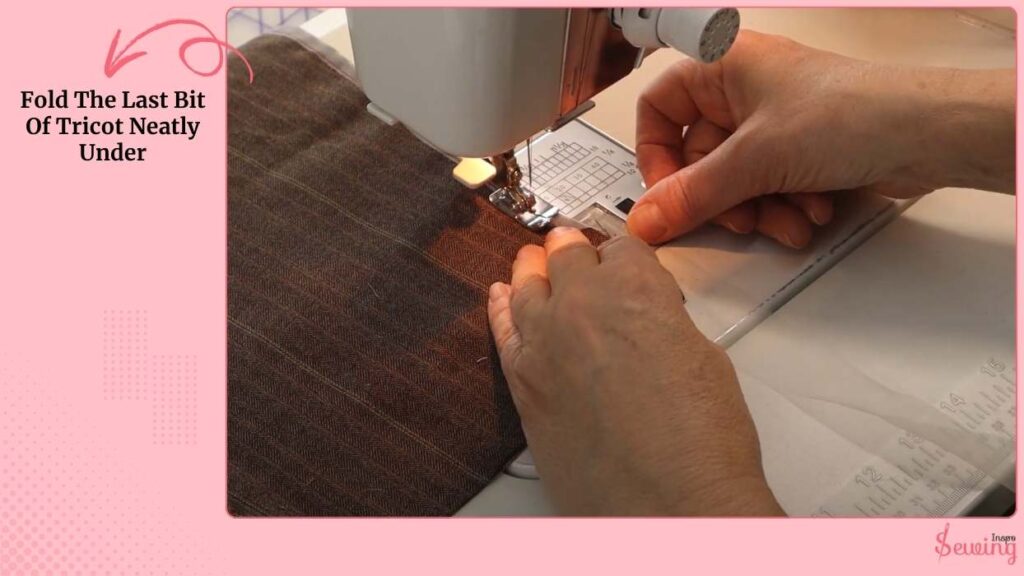
Tricot Stitch Youtube
If you are confused about anything, then watch this video
Best Tricot Stitch Sewing Machine
There isn’t a specific machine called a “tricot stitch” machine. But if you want to sew tricot and other knit fabrics professionally, a coverstitch machine is the best investment.
However, you can still use a regular sewing machine effectively by adding the right accessories, like a walking foot or an overcast/overedge foot. It helps prevent puckering and fraying.
For constructing garments with stretchy seams, a serger or overlock machine is ideal. It creates flexible, durable seams that move with the fabric and hold up over time.
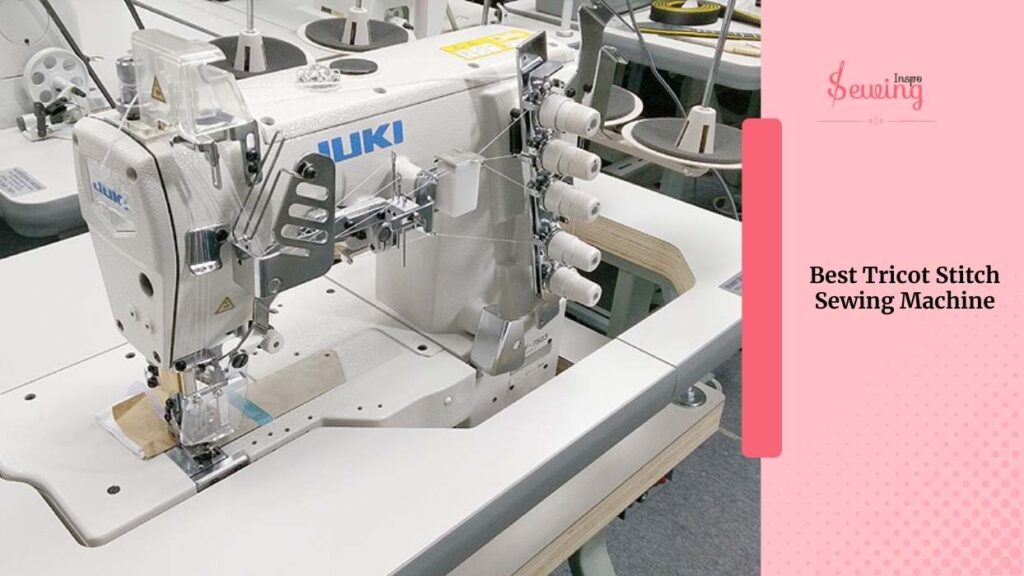
Frequently Asked Questions
Can I sew tricot without a coverstitch machine?
Yes! You can use a regular sewing machine with the right accessories, like a walking foot or overcast/overedge foot, to prevent puckering and fraying.
When should I use a tricot stitch?
Use it for stretch fabrics that need durable, flexible seams, such as knits, swimwear, lingerie, or elastic casings.
Do I need a serger to sew tricot?
A serger or overlock machine isn’t required. But it is ideal for constructing seams on stretchy fabrics because it creates flexible, long-lasting seams that move with the fabric.
Conclusion
That’s tricot stitch sewing machine works. It’s the right machine, accessories, and a bit of practice, you can create flexible, strong. It gives off a professional-looking seams that hold up beautifully and looks polished every time.


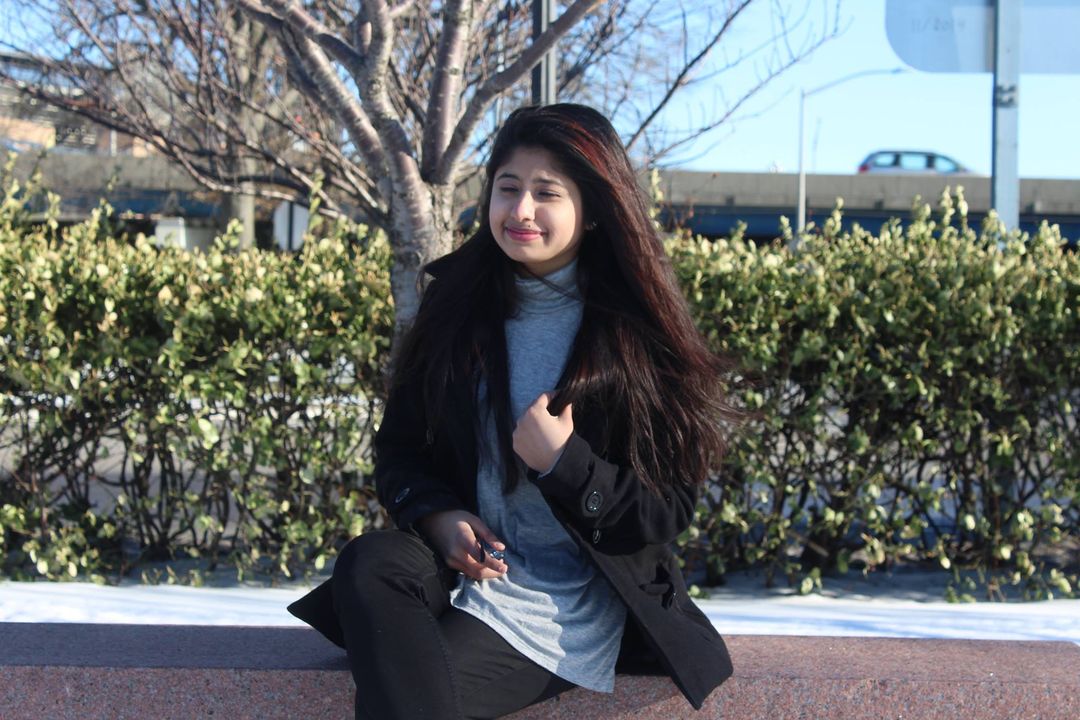
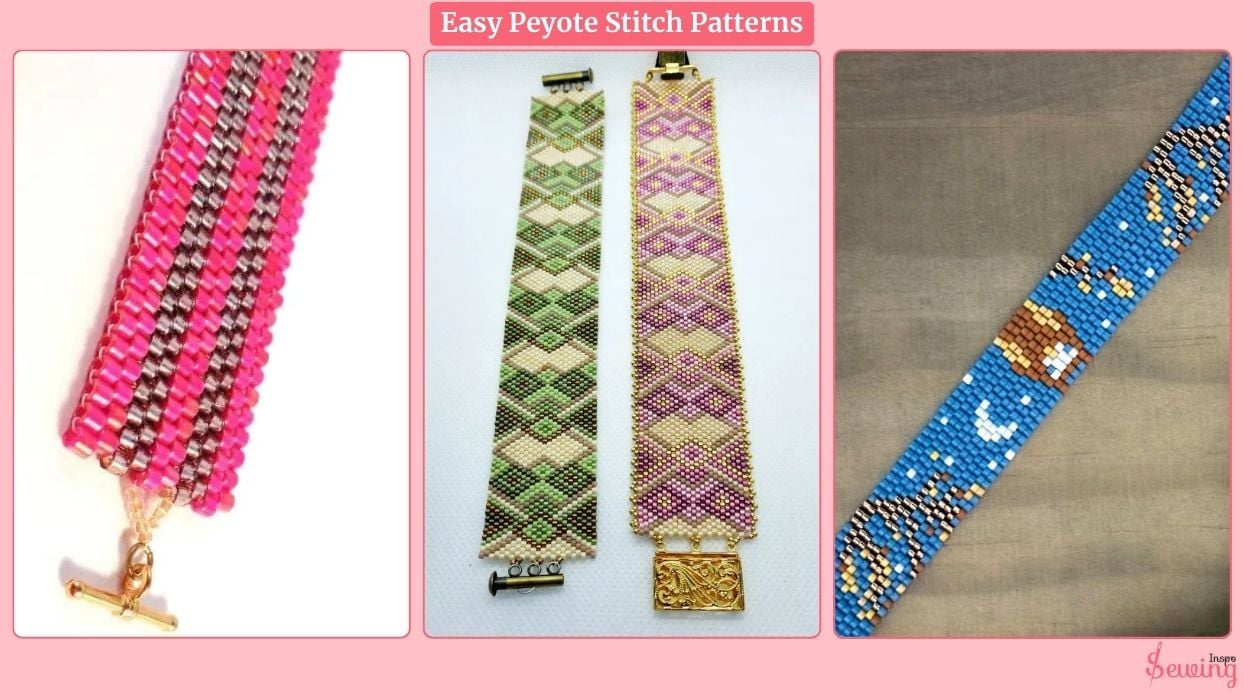

Leave a Reply